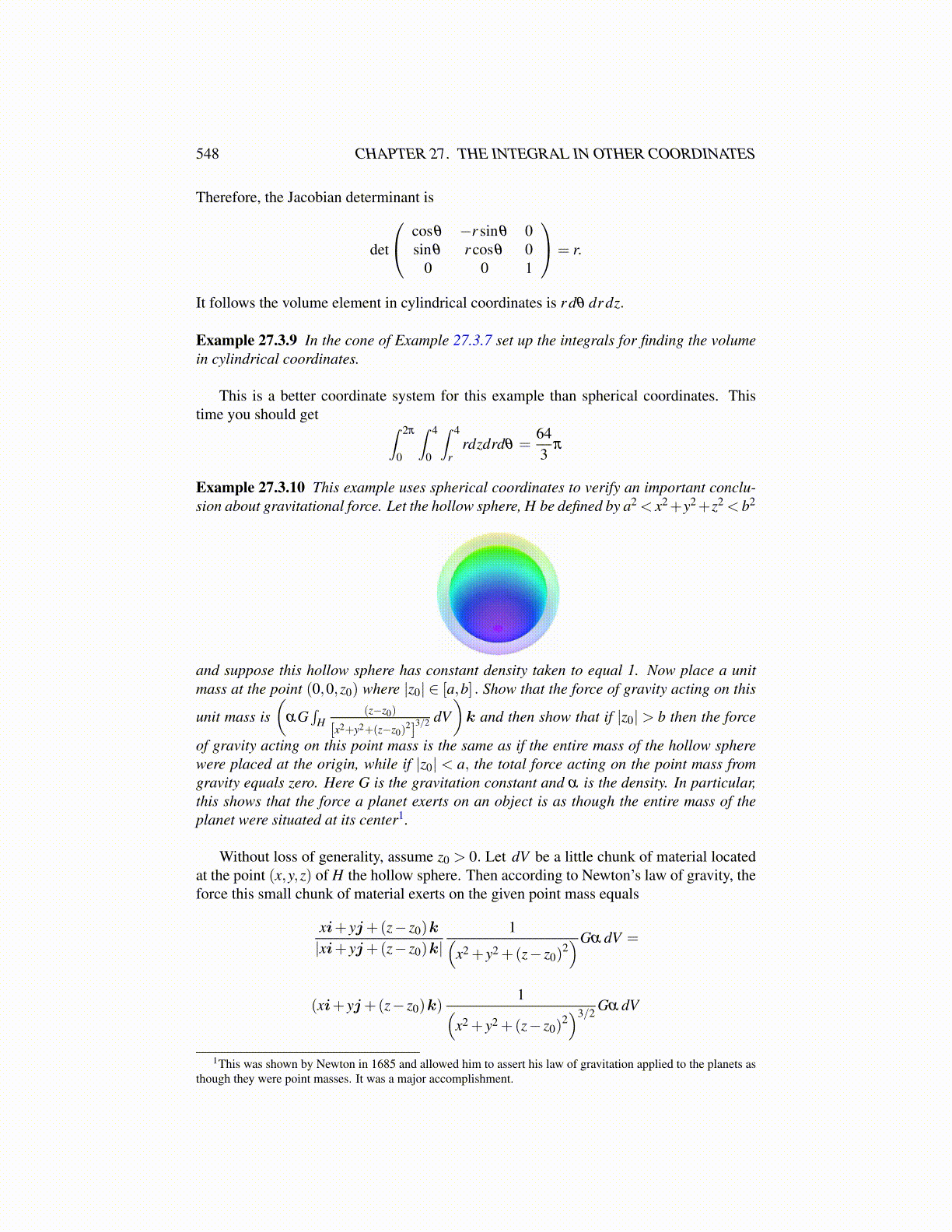
548 CHAPTER 27. THE INTEGRAL IN OTHER COORDINATES
14. Convert the following integrals into integrals involving spherical coordinates andthen evaluate them.
(a)∫ a−a∫√a2−x2
−√
a2−x2
∫√a2−x2−y2
−√
a2−x2−y2dzdydx
(b)∫ 1−1∫√1−x2
0∫√1−x2−y2
−√
1−x2−y2dzdydx
(c)∫√2−√
2
∫√2−x2
−√
2−x2
∫√4−x2−y2√x2+y2
dzdydx
(d)∫√3−√
3
∫√3−x2
−√
3−x2
∫√4−x2−y2
1 dzdydx
(e)∫ 1−1∫√1−x2
−√
1−x2
∫√4−x2−y2
−√
4−x2−y2dzdydx
27.5 The General ProcedureAs mentioned above, the fundamental concept of an integral is a sum of things of the formf (x) dV where dV is an “infinitesimal” chunk of volume located at the point x. Up to now,this infinitesimal chunk of volume has had the form of a box with sides dx1, · · · , dxp sodV = dx1 dx2 · · · dxp but its form is not important. It could just as well be an infinitesimalparallelepiped for example. In what follows, this is what it will be.
First recall the definition of a parallelepiped.
Definition 27.5.1 Let u1, · · · ,up be vectors in Rk. The parallelepiped determinedby these vectors will be denoted by P(u1, · · · ,up) and it is defined as
P(u1, · · · ,up)≡
{p
∑j=1
s ju j : s j ∈ [0,1]
}.
Now define the volume of this parallelepiped.
volume of P(u1, · · · ,up)≡ (det(ui ·u j))1/2 .
To justify this definition, recall that if each vector is in Rp, the volume of this paral-lelepiped is
∣∣det(u1 · · · up
)∣∣ . In three dimensions it is |u1 ×u2 ·u3| . Thus, makingthe obvious generalization and using det(A) = det
(AT), the volume in p dimensions is(
det((
u1 · · · up)T)
det(u1 · · · up
))1/2
= det[((
u1 · · · up)T)(
u1 · · · up)]1/2
The i jth entry of the matrix on the inside of [·] is ui ·u j and this is why this definitioncorresponds to earlier material. Definition 27.5.1 continues to hold in more general settingsincluding the case where the vectors are in Rq and you have a p dimensional parallelpiped.See Section 20.3.
The dot product is used to determine this volume of a parallelepiped spanned by thegiven vectors and you should note that it is only the dot product that matters. Let
x = f1 (u1,u2,u3) , y = f2 (u1,u2,u3) , z = f3 (u1,u2,u3) (27.3)